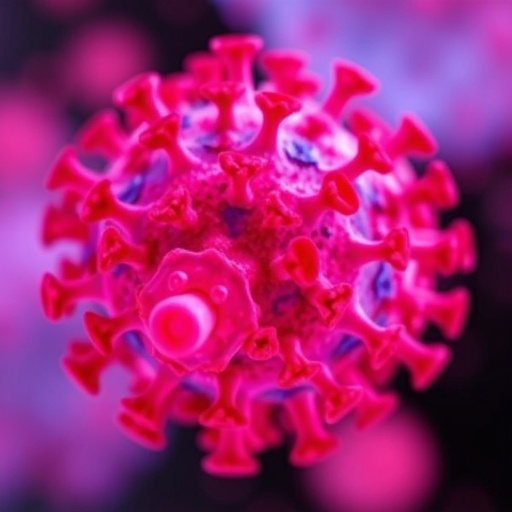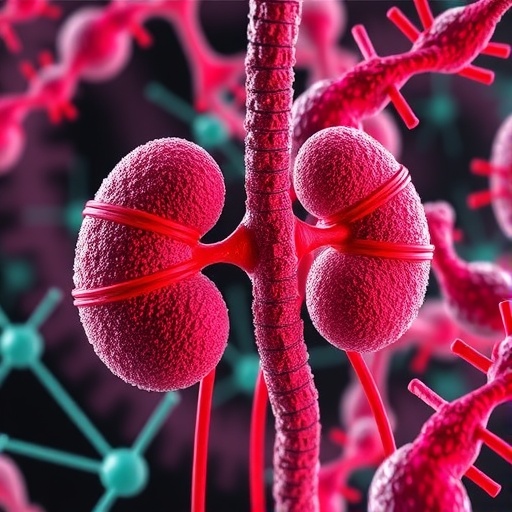In the relentless quest to unlock the complexities behind cancer biology, one gene has recently emerged as a focal point of interest: CISD1. This gene, encoding a protein integral to mitochondrial function and cellular iron homeostasis, is now recognized for its multifaceted involvement in various cancers. A groundbreaking pan-cancer bioinformatics study published in Genes & Diseases has unveiled unprecedented insights into CISD1’s role, positioning it as a promising biomarker with significant diagnostic, prognostic, and immunotherapeutic implications.
Leveraging an extensive array of publicly available databases—including TCGA (The Cancer Genome Atlas), GTEx (Genotype-Tissue Expression), THPA (The Human Protein Atlas), and datasets accessible through GEPIA2, SangerBox, cBioPortal, TIMER2.0, and others—the research team conducted a comprehensive molecular mining expedition. Their analysis revealed striking alterations in CISD1 expression across a spectrum of malignancies, with marked differences at both transcriptional and post-translational levels, underscoring CISD1’s pervasive influence in tumor biology.
One of the most riveting findings centers on the CISD1 gene’s mutational landscape. Specifically, mutations within its highly conserved zf-CDGSH domain, notably the A69S/V hotspot mutation, were frequently observed across multiple cancer types. This domain is critical for coordinating an iron-sulfur cluster pivotal to CISD1’s function in regulating mitochondrial oxidative phosphorylation and cellular iron balance. Disruption here presumably exacerbates oncogenic processes by altering metabolic and redox homeostasis, providing a mechanistic link between CISD1 mutation and tumorigenesis.
.adsslot_G8kdHaQWBh{ width:728px !important; height:90px !important; }
@media (max-width:1199px) { .adsslot_G8kdHaQWBh{ width:468px !important; height:60px !important; } }
@media (max-width:767px) { .adsslot_G8kdHaQWBh{ width:320px !important; height:50px !important; } }
ADVERTISEMENT
Expression analyses illuminated a dualistic pattern: while CISD1 is predominantly overexpressed in the majority of cancers—correlating strongly with tumor aggressiveness and poor patient outcomes—it is paradoxically downregulated in a subset of six cancer types. This dichotomy hints at a complex biological role, where CISD1 may act as an oncogenic driver in certain contexts while possibly exerting tumor-suppressive functions elsewhere, perhaps mediated by tissue-specific regulatory mechanisms or microenvironmental factors.
Clinically, elevated CISD1 levels were consistently associated with adverse prognostic indicators, including reduced overall survival and heightened mortality risk. Intriguingly, the study also uncovered a robust positive correlation between CISD1 expression and cancer stemness indices. This association implies that CISD1 might facilitate the maintenance of stem cell–like phenotypes within tumors, thereby fostering self-renewal, therapeutic resistance, and metastatic potential—hallmarks of the most tenacious and lethal malignancies.
Beyond its implications for tumor progression, CISD1 expression displayed a significant relationship with key genomic instability markers such as tumor mutation burden (TMB) and microsatellite instability (MSI). Both TMB and MSI have gained traction as predictive biomarkers for immunotherapy responsiveness, suggesting that CISD1’s activity might influence or reflect the immune landscape within tumors. These findings amplify the gene’s potential utility in stratifying patients for precision therapy.
A particularly compelling dimension of this research is the evidence linking CISD1 to the immunotherapeutic response. Tumors exhibiting heightened CISD1 expression demonstrated elevated levels of immune checkpoint molecules—proteins that enable cancer cells to evade immune surveillance. Given that immune checkpoint inhibitors are revolutionizing cancer treatment, CISD1’s role as a biomarker could refine patient selection and potentially forecast therapeutic efficacy, contributing to more personalized and effective immunotherapy regimens.
The study further posits CISD1 as a candidate therapeutic target. Considering its integral role in mitochondrial bioenergetics and iron-sulfur cluster coordination, strategies aimed at modulating CISD1 function—either through direct targeting of its iron-sulfur domain or regulation of its protein expression—could disrupt cancer cell metabolism and stemness, thereby curbing tumor growth and overcoming drug resistance. This represents a fertile avenue for the development of novel anti-cancer therapeutics.
Despite these exciting revelations, the authors acknowledge inherent limitations. Foremost, the conclusions drawn are predominantly based on integrative bioinformatics analyses without experimental corroboration, necessitating in vitro and in vivo validation. Moreover, heterogeneity among the sourced datasets—including variability in data processing and normalization methods—may introduce biases that affect interpretability. Nonetheless, the systematic nature of this pan-cancer evaluation lays a substantive foundation for future mechanistic and translational investigations.
The research also highlights CISD1’s significance at the interface of metabolism and oncogenesis. By coordinating mitochondrial functions and regulating cellular iron homeostasis, CISD1 influences reactive oxygen species (ROS) production and oxidative stress responses—both critical factors in cancer cell survival and proliferation. Dysregulation in these pathways is increasingly recognized as a hallmark of malignancy and a potential therapeutic vulnerability.
This comprehensive pan-cancer analysis thus consolidates CISD1’s position as a robust biomarker with versatile clinical applicability. From early cancer detection and prognostic stratification to predicting and enhancing responses to immunotherapies, CISD1 embodies the genetic complexity underpinning cancer heterogeneity. Its intricate involvement across multiple tumor types offers a window into the unified molecular underpinnings of diverse malignancies.
Furthermore, this study paves the way for the precise modulation of CISD1-associated pathways, which may yield significant advances in targeted cancer therapies. As research progresses, therapeutic agents designed to inhibit or normalize CISD1 function could become integral components of multimodal cancer treatment strategies, particularly for those tumors characterized by high CISD1 expression and stemness features.
In conclusion, this landmark investigation unveils CISD1 not merely as a passive genetic marker but as a pivotal player in the molecular orchestra of cancer. By elucidating its varied roles—from gene expression dynamics and mutational hotspots to stemness promotion and immune modulation—this research charts a promising roadmap for CISD1’s integration into clinical oncology. It underscores a future where tailored interventions targeting CISD1 could transform prognostic accuracy and therapeutic outcomes for patients worldwide.
Subject of Research: CISD1 gene as a multifaceted biomarker and therapeutic target in diverse human cancers.
Article Title: Exploring CISD1 as a multifaceted biomarker in cancer: Implications for diagnosis, prognosis, and immunotherapeutic response
References:
Caiyue Li, Zhipin Liang, Gabrielle Vontz, Connor Kent, Wenbo Ma, Lei Liu, Riya Dahal, Jovanny Zabaleta, Guoshuai Cai, Jia Zhou, Huangen Ding, Qiang Shen. Genes & Diseases. DOI: 10.1016/j.gendis.2025.101677
Image Credits: Caiyue Li, Zhipin Liang, Gabrielle Vontz, Connor Kent, Wenbo Ma, Lei Liu, Riya Dahal, Jovanny Zabaleta, Guoshuai Cai, Jia Zhou, Huangen Ding, Qiang Shen
Keywords: Biomarkers, Cancer, CISD1, Pan-cancer analysis, Immunotherapy, Tumor stemness, Mitochondrial function, Tumor mutation burden, Microsatellite instability, Prognostic marker
Tags: A69S/V hotspot mutation in CISD1CISD1 biomarker in cancer researchcomprehensive molecular mining in oncologydiagnostic implications of CISD1immunotherapeutic potential of CISD1iron homeostasis and cancermitochondrial function in cancer cellspan-cancer bioinformatics studiespost-translational modifications in tumorsprognostic value of CISD1 mutationsrole of iron-sulfur clusters in cancertranscriptional alterations in cancer genes





